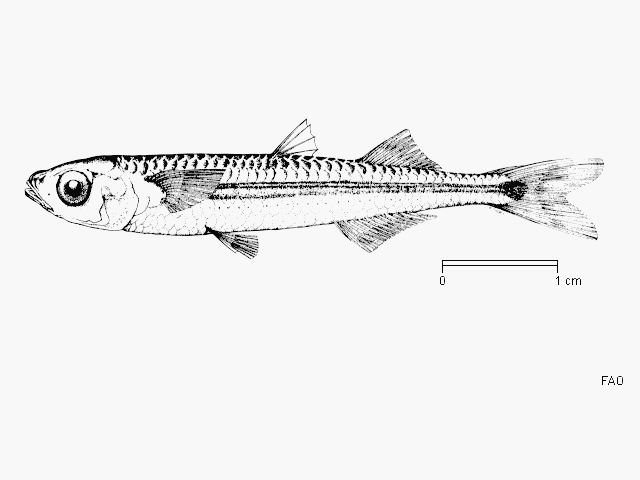| Atherinidae (Silversides), subfamily: Atherinomorinae |
| 10 cm TL (male/unsexed) |
|
reef-associated; marine; depth range 0 - 5 m |
| Indo-Pacific: East Africa to the northern Cook Islands, north to New Guinea and the Marshall Islands, south to northern Australia, New Caledonia and Fiji. |
|
Dorsal spines (total): 6-8; Dorsal soft rays (total): 8-12; Anal spines: 1-1; Anal soft rays: 12-17. Ascending process of premaxilla long and slender; ramus of dentary highly elevated posteriorly; midlateral band wide, broadest between anus and anal fin (Ref. 9760). First dorsal fin above middle of body; second dorsal fin originates behind the beginning of the anal fin; mid-lateral scales 40-43; transverse scales 5; predorsal scales 16-19 (Ref. 2334). Midlateral band width 2.3-3.3 in body depth (Ref. 37816).
Description: Characterized by translucent greenish color; silvery midlateral stripe; large eye, 2.5-2.8 in head length; jaws and roof of mouth with small teeth (Ref. 90102). |
| Inhabits lagoons and along shorelines of outlying islands (Ref. 3302). During daylight, schooling fish may be periodically seen to jump out of the water to avoid predators. They are also easily attracted to light. The fish are gravid at about 4-4.5 cm SL by July in the northern hemisphere. Because of their large numbers, they are probably important as forage food for larger fishes (Ref. 9760). |
|
Least Concern (LC); Date assessed: 14 August 2023 Ref. (130435)
|
| harmless |
Source and more info: www.fishbase.org. For personal, classroom, and other internal use only. Not for publication.
